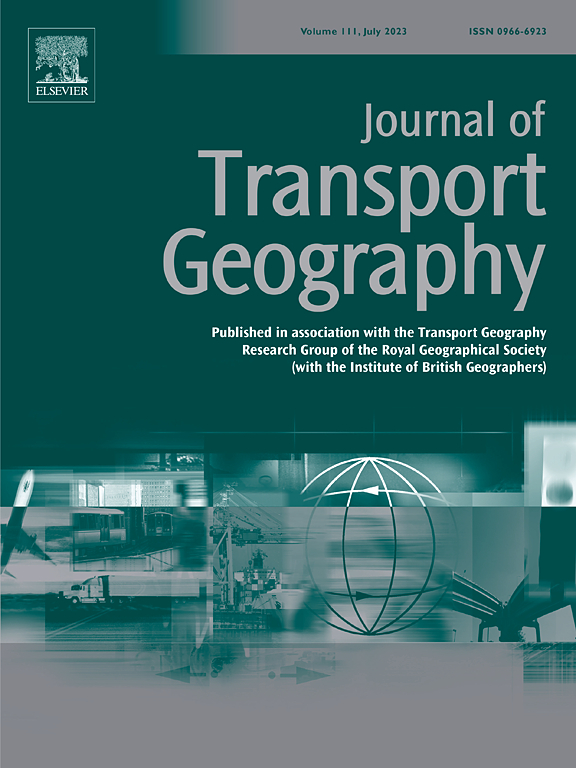借来的规模与借来的行政权力:高铁网络对长三角地区产业升级与多元外部性的影响
IF 5.7
2区 工程技术
Q1 ECONOMICS
引用次数: 0
摘要
虽然城市规模对区域交通基础设施效应的外部性已经被广泛讨论,但城市行政权力的作用却受到相对较少的学术关注。本文从经济外部性和行政外部性两个方面探讨了高铁发展对城市产业升级和区域发展的影响。本文运用“借用规模”和“集聚阴影”的概念,利用2000 - 2017年199个县域单位的面板数据,分析了高铁对长三角地区产业升级的影响。采用多阶段差异中差异(DID)和差异中差异(DDD)模型,我们的研究结果表明,高铁显著促进了长三角地区的产业升级,第二产业产值显著下降4.4%,第三产业产值显著增长7.4%。此外,研究还发现城市规模与制造业出口呈正相关,而行政权力增强了高铁连接地区服务业的集中度。这些发现不仅有助于现有的关于高铁在产业升级中的作用的学术研究,而且还提出了一种新的方法方法,通过交通基础设施作为中介机制的视角,将交通地理学和城市政治经济学联系起来。本文章由计算机程序翻译,如有差异,请以英文原文为准。
Borrowed size and borrowed administrative power: Effects of high-speed rail network on industrial upgrading and variegated externalities in the Yangtze River Delta, China
While the externalities of urban size on regional transportation infrastructure effects have been extensively discussed, the role of urban administrative power has received comparatively less scholarly attention. This study delves into the impact of high-speed rail (HSR) development on urban industrial upgrading and regional development, focusing on both economic and administrative externalities. By applying the concepts of ‘borrowed size’ and ‘agglomeration shadow,’ we analyze the effects of HSR on industrial upgrading in the Yangtze River Delta (YRD) region using panel data from 199 county-level units between 2000 and 2017. Employing multi-stage difference-in-differences (DID) and difference-in-difference-in-differences (DDD) models, our findings reveal that HSR significantly catalyzes industrial upgrading in the YRD, with a notable reduction in the output value of the secondary sector by 4.4 % and an expansion of the tertiary sector by 7.4 %. Additionally, this study indicates a positive correlation between urban size and manufacturing sector exit, while administrative power enhances the service sector's concentration in HSR-connected regions. These findings not only contribute to the existing body of scholarship on HSR's role in industrial upgrading but also advance a novel methodological approach that bridges transport geography and urban political economy through the lens of transport infrastructure as a mediating mechanism.
求助全文
通过发布文献求助,成功后即可免费获取论文全文。
去求助
来源期刊

Journal of Transport Geography
Multiple-
CiteScore
11.50
自引率
11.50%
发文量
197
期刊介绍:
A major resurgence has occurred in transport geography in the wake of political and policy changes, huge transport infrastructure projects and responses to urban traffic congestion. The Journal of Transport Geography provides a central focus for developments in this rapidly expanding sub-discipline.
 求助内容:
求助内容: 应助结果提醒方式:
应助结果提醒方式:


